Minnie the Minx: The children's champion still smashing stereotypes
- Published
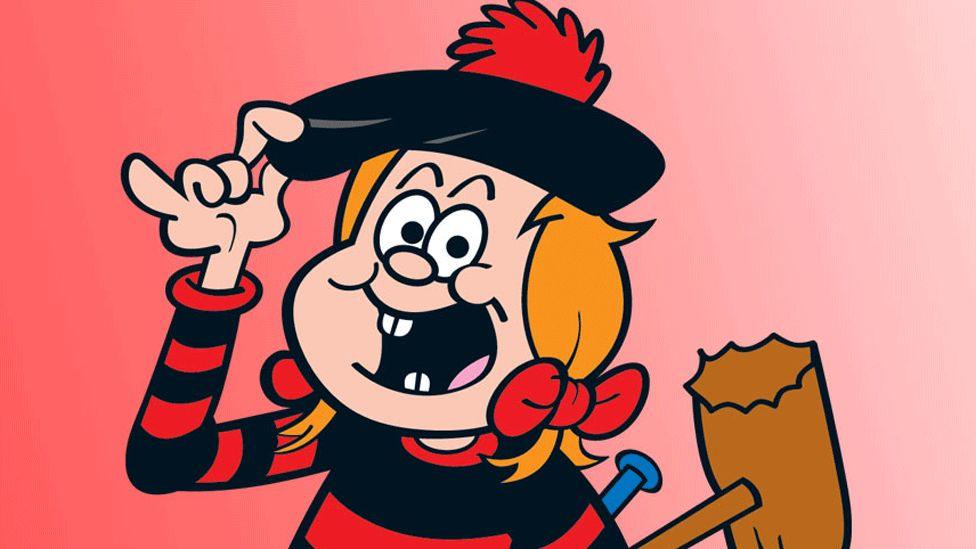
Minnie the Minx is one of the Beano's most popular characters
She might be 70 next year, but there are no plans for a thoroughly modern Minnie the Minx - as far as the Beano is concerned, it's society that is catching up with her.
The iconic cartoon character has made her way from the pages of the comic to the walls of V&A Dundee, a journey shown in a new episode of the BBC's Secrets of the Museum.
Laura Howell, who has drawn Minnie since 2018, said there was "quite a lot of truth" in descriptions of Minnie as a feminist icon.
"She is very much of the opinion that little girls can do whatever they want," she said.
"Any boy that told Minnie he was better than her would get very short shrift indeed."
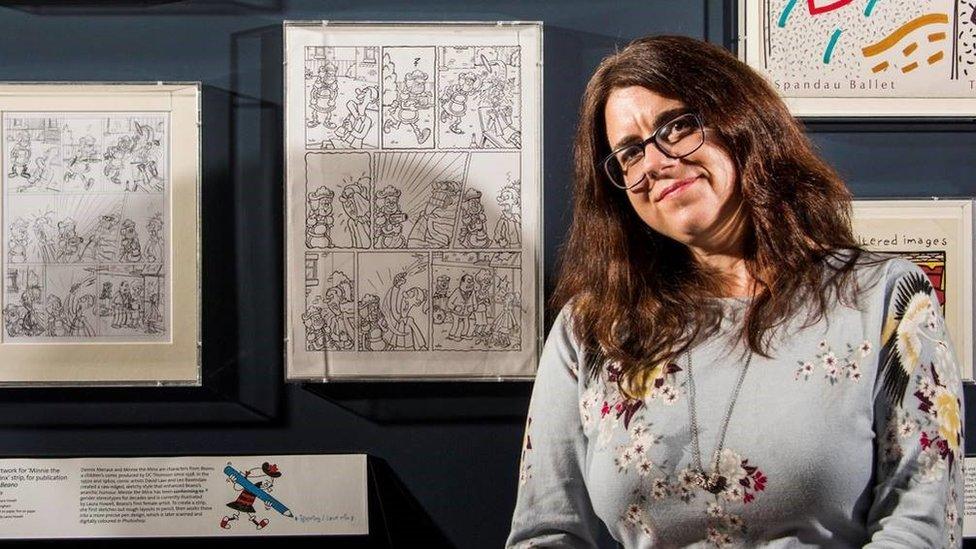
Laura Howell's Minnie the Minx artwork is now on display at V&A Dundee
Speaking to tourists and locals beside the Minnie sculpture in Dundee City Square, their descriptions range from "a little horror" to "not the stereotypical girlie-girl."
Minnie first appeared in The Beano in 1953 and is one of the major characters in the comic, which also stars Dennis The Menace.
She was created, in the Beano's words, to be "just as tough as the boys" and to "kick back against pre-war societal norms."
The comic said that Minnie tackles contemporary issues like bullying and the environment, but enjoys the things the 21st Century offers to young people, like gaming.

Minnie tackles issues important to young people, including bullying and the environment
Laura, who draws Minnie at her home in Birmingham, said the character was still relevant in 2022.
She said: "No matter what the era, children will always respond to characters that push back against the rules.
"So she's a little bit like me in that respect.
"If someone had come to me in the past and said women can't draw funny comics, the first thing I would have done would be to go out and draw a funny comic for them."
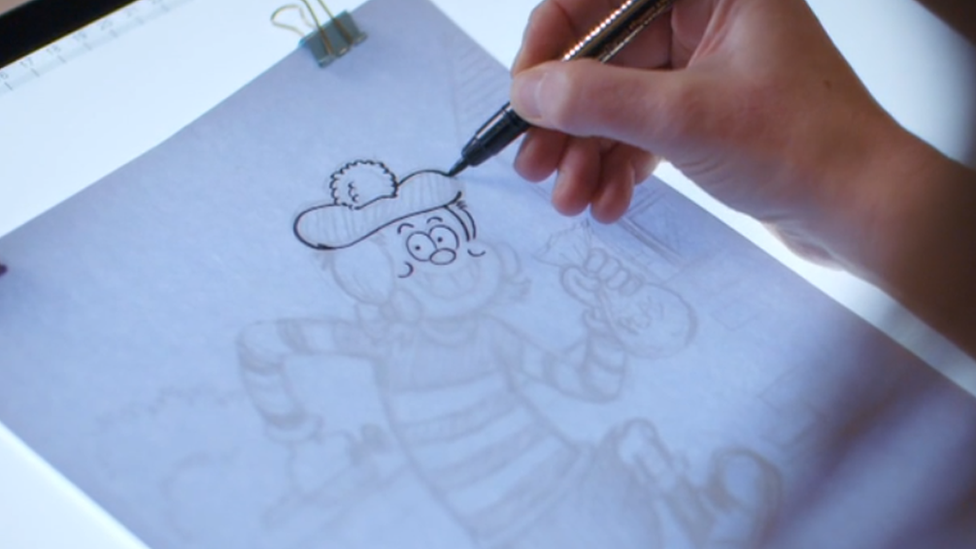
Laura Howell has drawn Minnie from her home in Birmingham for four years
Laura is the first full-time female artist in Beano's 84-year-old history. I ask her why it's taken so long?
She said: "I'm very certain that there wasn't some kind of 'no-girls' sign over the door of the Beano offices for several decades.
"If I had to take a guess it's that female artists tend to be underrepresented in humour comics.
"Maybe for many years it was seen a bit undignified for women to be drawing people sitting on whoopee cushions, for example.
"But I'm perfectly happy to do that sort of thing, so a Beano job suited me down to the ground."
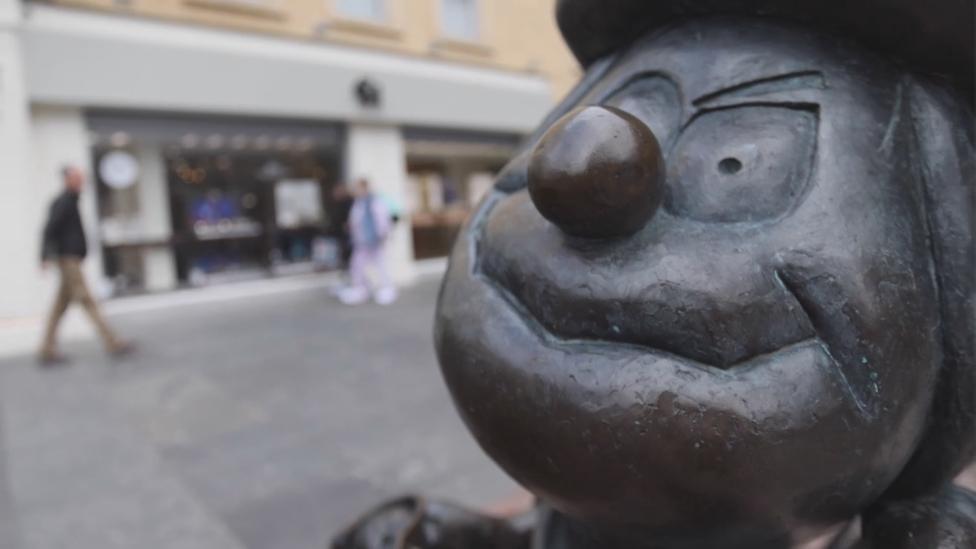
Minnie is one of many comic strip characters on display in Dundee city centre
David Powell is archive manager for Dundee-based Beano publisher DC Thomson.
He said Minnie was an instant hit in 1953, quickly gaining the coveted "splash of red" that elevated popular characters above their monochrome co-stars.
Initially given six panels in Beano, she moved to two pages which was "the ultimate sign that you've made it."
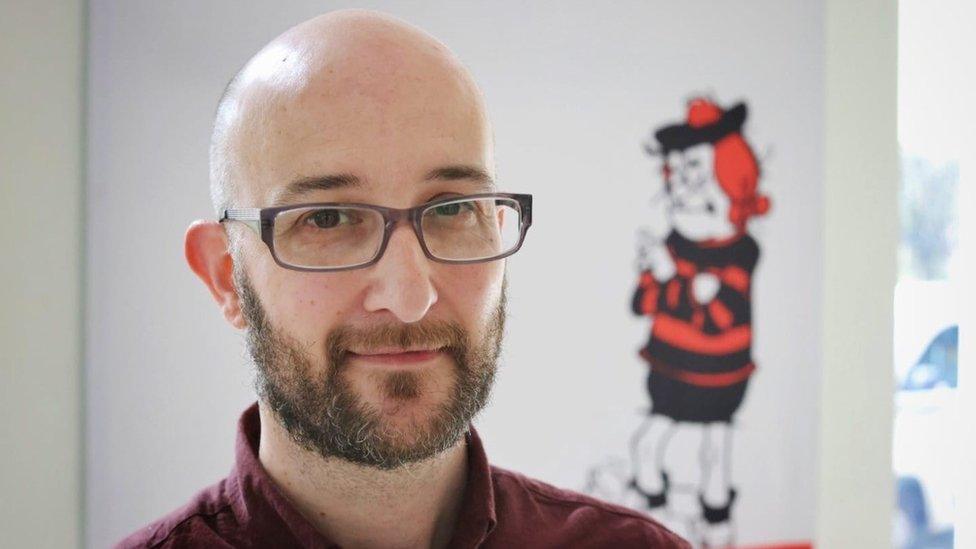
David Powell said Minnie was an "instant hit" with both male and female Beano readers
David said Minnie quickly found both male and female fans.
He said: "The Beano was popular with both girls and boys, it was always a gender neutral kind of comic.
"The boys liked Minnie because she was boisterous and confident, and did all the things that they were probably doing as well.
"And the girls liked it because she was an aspirational character."
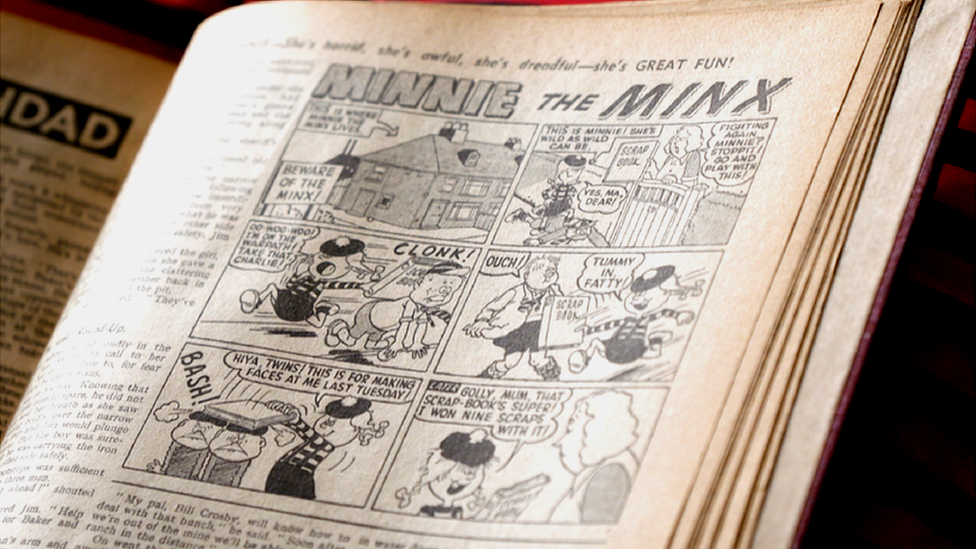
Minnie's first appearance in the Beano was over six panels in December 1953
David said the character has evolved over time, but still stayed true to her origins.
He said: "When you see what she's up to these days, you'll see her challenging authority, which she's always done.
"She's challenged parents recently on things like littering, or the way that they expect children to behave, which is not maybe how children of today see that they should be behaving.
"Children have rights and they have the right to be heard, and I think Minnie's that champion."
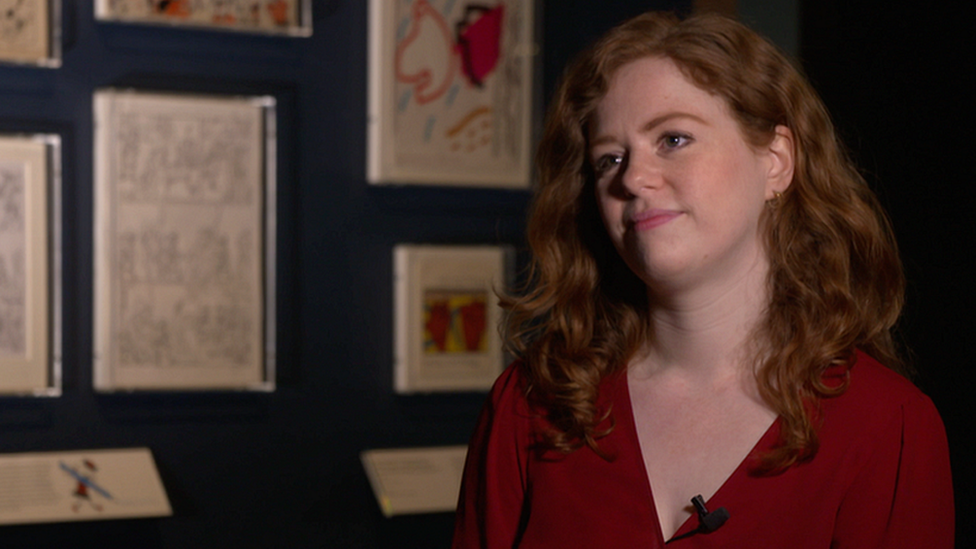
Curator Meredith More said Minnie was the "real female icon of the Beano."
Across town at V&A Dundee, Laura Howell's artwork is now on display, replacing a Dennis the Menace piece which has made way for Minnie.
Curator Meredith More said: "We decided that it was a great chance to bring in Minnie the Minx, the real female icon of the Beano.
"It's really important to us in the Scottish design gallery to represent a broader section of society.
"Bringing in Minnie as a female character designed by a female artist is a really important step in trying to reflect women's really important role in design within the museum."